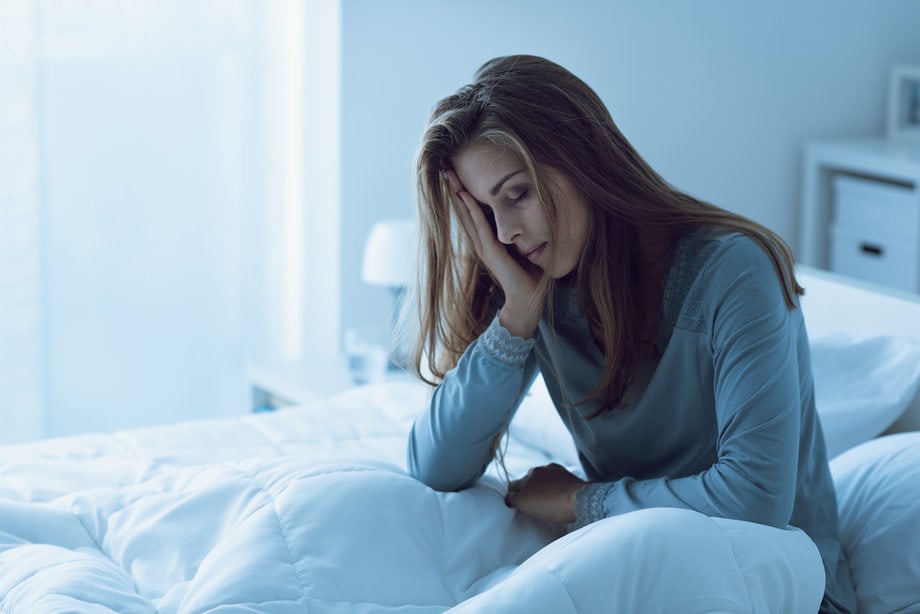Why Sleep Disorders Are Often Overlooked in Women

Sleep disorders are a prevalent yet often overlooked issue among women. This article aims to explore the reasons behind this oversight by examining the prevalence of sleep disorders in women, the gender bias in diagnosing such disorders, and the impact of hormonal changes on sleep patterns.
Additionally, common sleep disorders experienced by women will be discussed, along with the challenges associated with identifying and treating them.
Ultimately, raising awareness about sleep disorders in women is crucial to address this underrecognized and underdiagnosed health concern.
Key Takeaways
- Sleep disorders in women are often underestimated and overlooked due to a lack of awareness and systematic screening.
- Diagnostic disparities and gender bias in diagnosing sleep disorders contribute to underdiagnosis and misdiagnosis in women.
- Women tend to exhibit different symptoms compared to men, making it challenging for healthcare professionals to recognize and diagnose sleep disorders in women.
- Hormonal changes during menstruation, pregnancy, and menopause significantly impact sleep patterns in women, leading to sleep disturbances and the need for further research in this area.
Prevalence of Sleep Disorders in Women
The prevalence of sleep disorders in women may be underestimated due to a lack of awareness and systematic screening.
Sleep disorders are prevalent in women across different age groups and can have a significant impact on their overall health and well-being.
Hormonal changes, particularly during menstruation, pregnancy, and menopause, can significantly affect sleep patterns in women.
During menstruation, fluctuations in hormone levels can lead to symptoms such as insomnia and excessive daytime sleepiness.
Pregnancy is associated with increased sleep disturbances, including insomnia, frequent awakenings, and excessive daytime sleepiness.
The hormonal changes during menopause can also disrupt sleep, leading to insomnia, night sweats, and hot flashes.
Furthermore, the impact of hormonal changes on sleep patterns can extend beyond these specific life stages, affecting women’s sleep throughout their lifespan.
Therefore, recognizing the prevalence of sleep disorders in women and understanding the impact of hormonal changes on sleep patterns is crucial for effective diagnosis and management of sleep disorders in this population.
Gender Bias in Diagnosing Sleep Disorders
This discussion will focus on the diagnostic disparities for women and the underestimation of sleep disorders.
Gender bias in diagnosing sleep disorders is a significant issue that affects the accuracy and effectiveness of healthcare for women. There is evidence to suggest that women are often overlooked or misdiagnosed when it comes to sleep disorders, leading to potential long-term consequences for their health and well-being.
Diagnostic Disparities for Women
Diagnostic disparities for women in sleep disorders are prevalent, with many cases going undiagnosed or misdiagnosed. This can be attributed to various factors, including diagnostic challenges and a lack of research in this area.
- Diagnostic challenges: Sleep disorders in women often present differently than in men, making them more difficult to identify. Symptoms may be subtler or less recognized, leading to delays in diagnosis or misdiagnosis. Additionally, healthcare providers may not be adequately trained to recognize and address sleep disorders in women, further contributing to diagnostic challenges.
- Lack of research: Historically, sleep disorders have been predominantly studied in men, resulting in a limited understanding of how these disorders manifest in women. This lack of research has led to a dearth of evidence-based guidelines for diagnosing and treating sleep disorders in women, making it harder for healthcare providers to accurately identify and manage these conditions.
- Underlying biases: Gender biases may also play a role in the diagnostic disparities for women in sleep disorders. Stereotypes and societal expectations about women’s sleep patterns and behaviors can influence healthcare providers’ perception and evaluation of symptoms, potentially leading to underdiagnosis or dismissal of women’s sleep concerns.
Overall, the combination of diagnostic challenges, lack of research, and underlying biases contribute to the prevalent diagnostic disparities for women in sleep disorders.
Underestimating Sleep Disorders
Underestimating the impact of sleep disorders can hinder early detection and appropriate intervention, potentially leading to adverse health outcomes.
Sleep disorders are often overlooked, and this underestimation is particularly evident in the context of gender disparities. Research suggests that sleep disorders in women are frequently misdiagnosed or undiagnosed altogether. This may be attributed to the fact that women tend to exhibit different symptoms compared to men, leading to a lack of recognition and understanding among healthcare professionals.
Additionally, societal norms and gender biases may contribute to the underestimation of sleep disorders in women. The consequences of underestimating sleep disorders in women can be significant, as these conditions can have a detrimental impact on physical and mental health.
It is crucial to raise awareness and improve healthcare professionals’ understanding of sleep disorders in women to ensure timely detection and appropriate intervention.
Impact of Hormonal Changes on Sleep Patterns
Hormonal changes during the menstrual cycle and menopause can significantly impact sleep patterns in women. These changes can result in sleep disturbances, such as difficulty falling asleep, staying asleep, or experiencing poor sleep quality. The impact of hormonal fluctuations on sleep is multifactorial and can be influenced by various factors, including stress and mental health.
The relationship between stress and sleep quality is well-documented. High levels of stress can disrupt normal sleep patterns and contribute to the development of sleep disorders. Chronic stress can lead to an increased risk of insomnia, which further exacerbates the sleep disturbances caused by hormonal changes.
Furthermore, there is a bidirectional relationship between sleep disorders and mental health. Sleep disorders, such as insomnia, sleep apnea, and restless leg syndrome, have been found to be associated with an increased risk of mental health conditions, including depression and anxiety. Conversely, individuals with mental health disorders are more likely to experience sleep disturbances.
Common Sleep Disorders in Women
This discussion focuses on the impact of hormonal influences on sleep, gender-specific symptoms, and the underdiagnosis and misdiagnosis of sleep disorders in women.
Hormonal changes, such as those occurring during menstruation, pregnancy, and menopause, can significantly disrupt sleep patterns.
Moreover, women often experience unique symptoms and manifestations of sleep disorders, which may go unrecognized or misattributed to other causes.
These factors contribute to the underdiagnosis and misdiagnosis of sleep disorders in women, highlighting the need for further research and awareness in this area.
Hormonal Influences on Sleep
Sleep disorders in women are influenced by hormonal changes, which can impact their sleep patterns and overall sleep quality. Hormonal imbalances, such as those experienced during menopause, can disrupt normal sleep-wake cycles and lead to various sleep disturbances. These disturbances include insomnia, frequent awakenings during the night, and difficulty falling back asleep.
The effects of menopause on sleep are multifaceted and can be attributed to a decrease in estrogen levels. Estrogen plays a crucial role in regulating sleep, and its decline during menopause can result in increased sleep fragmentation and decreased total sleep time. Additionally, hormonal imbalances can also contribute to other sleep disorders such as sleep apnea and restless legs syndrome.
Therefore, it is important for healthcare providers to consider hormonal influences when evaluating and treating sleep disorders in women.
Gender-Specific Symptoms
Gender-specific symptoms related to sleep disturbances in men and women can provide valuable insights into the underlying causes and potential treatment approaches for these sleep-related issues. One important factor to consider is the impact of hormonal changes on sleep patterns. Hormonal fluctuations, such as those that occur during the menstrual cycle, pregnancy, and menopause, can significantly affect sleep quality and quantity in women. For example, symptoms such as hot flashes, night sweats, and mood changes are commonly reported by women experiencing menopause. On the other hand, men may experience symptoms related to sleep apnea, which may be influenced by hormonal changes as well. Understanding these gender-specific symptoms can help healthcare professionals tailor interventions and therapies to address the unique sleep needs of men and women.
| Gender | Symptoms | Hormonal Influence |
|---|---|---|
| Women | Hot flashes, night sweats, | Menopause |
| mood changes | ||
| Men | Sleep apnea | Hormonal changes |
Underdiagnosis and Misdiagnosis
Underdiagnosis and misdiagnosis of sleep disorders can result in delayed or ineffective treatment, leading to potential health complications and diminished quality of life. Sleep disorders are often underreported, with individuals failing to recognize the severity of their symptoms or attributing them to unrelated factors. This underreporting can be influenced by cultural factors, such as societal expectations and norms surrounding sleep and health.
Cultural beliefs and practices may also contribute to the misinterpretation of sleep disorder symptoms, leading to misdiagnosis or dismissal of the condition. Additionally, healthcare professionals may lack awareness or understanding of sleep disorders in certain cultural contexts, further contributing to underdiagnosis.
Addressing these issues requires increasing awareness and education about sleep disorders, as well as promoting culturally sensitive and inclusive healthcare practices.
Challenges in Identifying and Treating Sleep Disorders in Women
Challenges arise when attempting to identify and treat sleep disorders in women due to various factors that complicate diagnosis and treatment approaches. In healthcare, challenges stem from the lack of awareness and understanding of sleep disorders specific to women. Societal pressures also play a role in impeding the identification and treatment of sleep disorders in women.
Women often face multiple responsibilities, including work, family, and household duties, which can lead to neglecting their own sleep health. Additionally, societal expectations regarding sleep and the perception of sleep disorders as a sign of weakness or laziness may discourage women from seeking help.
These challenges in healthcare and societal pressures highlight the need for increased awareness, education, and support for women with sleep disorders to ensure timely identification and appropriate treatment approaches.
Importance of Raising Awareness About Sleep Disorders in Women
The challenges in identifying and treating sleep disorders in women highlight the importance of raising awareness about this issue. Sleep disorders in women often go overlooked due to various factors, such as societal norms, lack of knowledge, and gender bias in healthcare. Raising awareness about sleep disorders in women is crucial for several reasons.
First, it helps to dispel the misconception that sleep disorders primarily affect men. By highlighting the prevalence and impact of sleep disorders in women, society can better understand the need for targeted research and interventions.
Second, raising awareness can lead to early detection and intervention, improving women’s overall health and quality of life. Increased knowledge can empower women to seek help and advocate for themselves, while healthcare providers can better recognize and address sleep disorders in their female patients.
Lastly, it paves the way for further research and understanding of the unique factors contributing to sleep disorders in women, ultimately informing more effective treatments and interventions.
Overall, raising awareness about sleep disorders in women is essential for combating the underdiagnosis and undertreatment of this critical health issue.
Frequently Asked Questions
How Do Sleep Disorders Differ in Prevalence Between Men and Women?
Prevalence differences of sleep disorders between men and women vary due to a range of factors including hormonal changes, genetic predisposition, and social roles. Further research is needed to identify specific risk factors and develop tailored interventions.
What Are the Common Signs and Symptoms of Sleep Disorders in Women?
The common signs and symptoms of sleep disorders in women include difficulty falling asleep, frequent awakenings during the night, daytime sleepiness, and impaired daytime functioning. These sleep disorders can negatively impact mental health and can be influenced by various lifestyle factors.
Are There Any Specific Hormonal Changes That Significantly Impact Women’s Sleep Patterns?
Hormonal imbalance, particularly during menopause, can significantly impact women’s sleep patterns. This can result in various sleep disorders such as insomnia, sleep apnea, and restless leg syndrome. Understanding these hormonal changes is crucial for recognizing and addressing sleep disorders in women.
What Are the Challenges Faced by Healthcare Professionals in Accurately Diagnosing and Treating Sleep Disorders in Women?
Challenges faced by healthcare professionals in accurately diagnosing and treating sleep disorders in women include the underrecognition of symptoms, the lack of standardized diagnostic criteria, and the presence of comorbidities that can confound the diagnosis. Misdiagnosis can lead to inadequate treatment and poorer health outcomes.
How Can Raising Awareness About Sleep Disorders in Women Contribute to Better Diagnosis and Treatment Outcomes?
Raising awareness about sleep disorders in women can contribute to better diagnosis and treatment outcomes by increasing knowledge among healthcare professionals, promoting early detection, and encouraging women to seek appropriate medical help.








